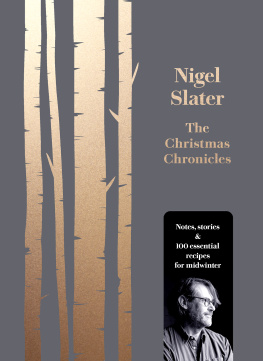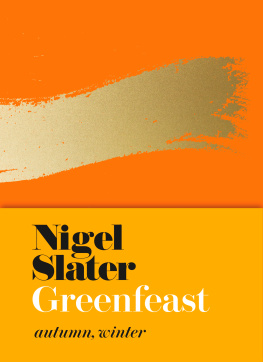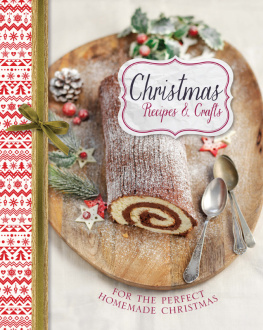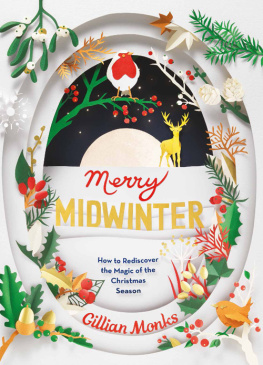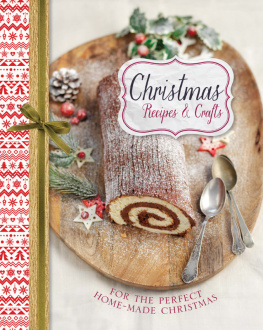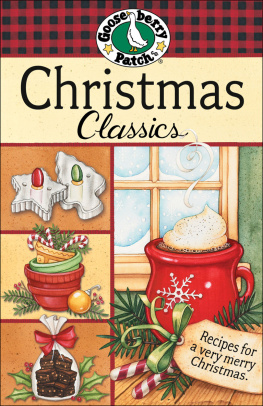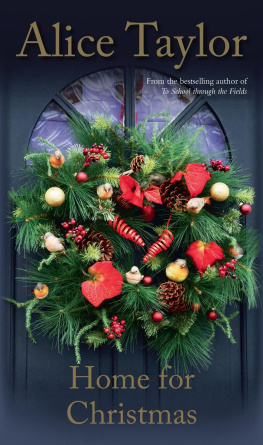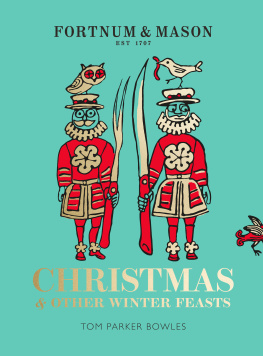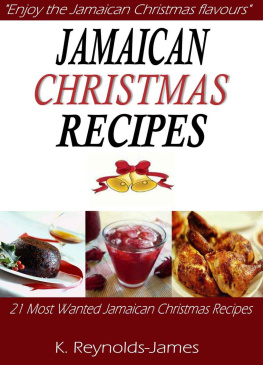4th Estate
An imprint of HarperCollinsPublishers
1 London Bridge Street
London SE1 9GF
www.4thEstate.co.uk
This eBook edition published by 4th Estate in 2017
Text copyright Nigel Slater 2017
Location photographs Nigel Slater 2017
Recipe photographs Jonathan Lovekin 2017
Nigel Slater asserts the moral right to be identified as the author of this work.
A catalogue record for this book is available from the British Library.
All rights reserved under International and Pan-American Copyright Conventions. By payment of the required fees, you have been granted the non-exclusive, non-transferable right to access and read the text of this eBook on-screen. No part of this text may be reproduced, transmitted, downloaded, decompiled, reverse engineered, or stored in or introduced into any information storage and retrieval system, in any form or by any means, whether electronic or mechanical, now known or hereinafter invented, without the express written permission of HarperCollins Publishers.
Source ISBN: 9780008260194
Ebook Edition October 2017 ISBN: 9780008260200
Version: 2017-09-14
Contents
For James
Who once told me You can grow old, just make sure you never grow up.
The icy prickle across your face as you walk out into the freezing air. The piercing burn to your sinuses, like wasabi. Your eyes sparkle, your ears tingle. The rush of cold to your head is stimulating, vital, energising.
The arrival of the first snap of cold is invigorating, like jumping into an ice pool after the long sauna of summer. Winter feels like a renewal, at least it does to me. I long for that ice-bright light, skies of pale blue and soft grey light that is at once calm and gentle, fresh and crisp. Away from the stifling airlessness of summer, I once again have more energy. Winter has arrived. I can breathe again.
My childhood memories of summer are few and precious. Picking blackcurrants for pocket money. A vanilla ice cream, held between two wafers, eaten on the seafront with my mum, seagulls overhead. Sitting in a meadow, buttercups tickling my bare legs, eating ham sandwiches and drinking dandelion and burdock. Pleading with my parents to stop the car so I could get out and pick scarlet poppies, with petals like butterflies wings that wilted before I could get them home. These are virtually the only recollections I have of those early summers. It is the winters that stay in my memory, carved deep as a fjord, as long and clear as an icicle.
It is as if my entire childhood was lived out in the cold months, a decade spent togged up in duffel coats and mittens, wellingtons and woolly hats. To this day, I am never happier than when there is frost on the roof and a fire in the hearth. I have always preferred snow underfoot to sand between my toes.
I love the crackle of winter. The snap of dry twigs underfoot, boots crunching on frozen grass, a fire spitting in the hearth, ice thawing on a pond, the sound of unwrapping a Christmas present from its paper. The innate crispness of the season appeals to me, like newly fallen snow, frosted hedges, the first fresh page of a new diary. Yes, there is softness in the cold months, too, the voluminous jumpers and woolly hats, the steam rising from soup served in a deep bowl, the light from a single candle and the much-loved scarf that would feel like a burden at any other time of year.
We all know winter. The mysterious whiff of jasmine or narcissus caught in the cold air; the sadness of spent, blackened fireworks the morning after Bonfire Night; a row of pumpkins on a frosted allotment spied from a train window; the magical alchemy of frost and smoke. Winter is the smell of freshly cut ivy or yew and the childish excitement of finding that first, crisp layer of fine ice on a puddle. It is a freckling of snow on cobbled pavements and the golden light from a window on a dark evening that glows like a Russian icon on a museum wall. But for each midwinter sunset, there is another side to this season. Like the one of 19623, when farmers, unable to negotiate deep snowdrifts, wept as their animals froze to death in the fields; the snap of frail bones as an elderly neighbour slips on the ice; the grim catalogue of deaths of the homeless from hypothermia. Winter is as deadly as she is beautiful.
A walk through the snow
It started with berries. Holly, rowan, rosehips. A project to record the plants, edible and poisonous, that we spotted on our walk to school. Two miles, in my case, of hedgerows to inspect daily. Hardly a project for me; I knew those hedgerows intimately, each tree and ditch, every lichen-covered gate. I knew which had wild sweet peas Lathyrus odoratus or primroses hidden by twigs and where to find a bullfinchs nest. When you walk the same route every day on your own, you get to know these things. A tree you must duck to avoid a soaking if it has rained during the night; the progress of a slowly decomposing tree stump among the grass; a bush that delights with a froth of white blossom in spring that by autumn is a mass of purple-black berries. You get to know the site of the sweetest blackberries and the exact location of the wild violets, white and piercing purple, that twinkle like stars in dark holloways.
Even then I knew that hedgerows were sacred, the homes of birds nests and voles, hedgehogs and haws. I knew that the long, slim rosehips came from the single wild roses that are to this day one of my favourite flowers, along with the hawthorn. I knew too that my fathers name for hawthorn was bread and cheese, an ancient reference to the usefulness of its leaves and berries in winter. I also understood that the scarlet berries of yew and holly were never, ever, for consumption.

It was the berries left behind in the winter that held a special fascination for me. The darkening rosehips and hawthorn berries seen against a tapestry of frosty leaves; the solemn beauty of ivy and hypericum berries against a grey wall; a rosehip trapped in ice. Walking was part of my country childhood. A solitary one, but by no means lonely. Not that there was any choice. My father drove back to the Black Country during the week. We had just four buses, two on a Wednesday one there, one back and two on Saturday. A bike, you say? Not up the steep hills that surrounded Knightwick, with a gym bag and a leather satchel full of books. There were always books. We lived on the border of two counties. Home and school were in Worcestershire, the nearest shops in Herefordshire. The walks were wretched in summer, sweaty and hateful, full of stinging nettles and sunburn, but in autumn and winter each day was an adventure. I rarely got home before darkness fell. There was a moment, a patch of barely half an hour, when the sun would burn fiercely in the winter sky, just before it slid away, that I regarded as unmissable. Something I had to be outside for.
It was the walk to school that started everything. A life lived with the rhythm of the seasons. Not purely the food (miles from a supermarket or a greengrocer, we ate more seasonally than most), but the outdoors too, the landscape, the garden and the market. The sounds and smells that mark one season as different from another.
By the way, I kept that school project, neatly written in fountain pen, its berry-studded exercise books covered in dried leaves and curls of old mans beard, for almost twenty years. Like pretty much everything I owned, it was destroyed in a house fire shortly after I moved to London.

